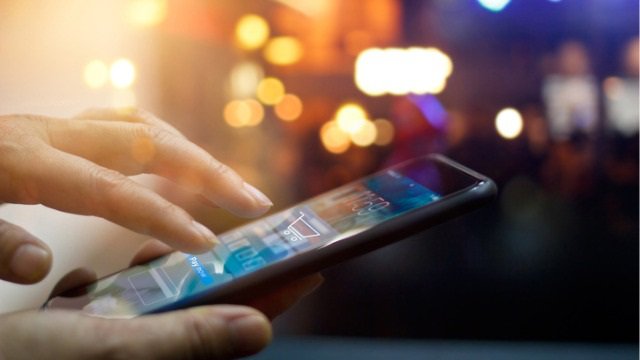Omnichannel services continue to change the offers that retailers provide and the ways that consumers buy. The demands on retailers are changing in lockstep. Even as eCommerce sales grow, retailers must adjust to shrinking margins and customers’ cherry-picking the best deals. Mobile’s growing influence also affects consumer web and in-store sales, even when buyers are physically browsing the aisles of retailers.
The beginning of change for consumer-facing industries started in 1991 when the internet was opened to commercial use and eCommerce became mainstream. The next step in the transformation of retail came with the development of multichannel retailing.
Multichannel retailing evolved from the growth of e-commerce and the need to reach a wider audience anywhere and everywhere from a coffee shop to their sofas. We are now in the third phase of retailing with omnichannel retailing.
Omnichannel retailing is the next evolution of retailing. Fast becoming the standard retail strategy for major retailers, omnichannel retailing takes the method of customer engagement and selling a step further. It is the future of retail commerce.
Omnichannel shoppers have a 30% higher lifetime value than those who shop using only one channel. (Google)
Omnichannel vs. Multichannel
A retail brand operating with a multichannel strategy will have a multitude of selling and engagement channels including a website, chat app, brick and mortar locations, a mobile app, digital advertising, and social media. The multichannel retailer uses each of these channels in different ways to push out the company objectives rather than serve their customer’s interests. This channel-centric manner of thinking may still get sales but this a short-term strategy compared to focusing on their customer’s interests and needs and winning long-term loyalty.
Enter omnichannel retailing. An omnichannel strategy may have the same set of channels but connects all these various touchpoints together for a more unified customer experience. The customer does not care about the tactics assigned to a retailer’s various channels. The lines between online and offline shopping are no longer distinct.
87% of customers think brands need to put more effort into providing a seamless experience. (Zendesk)
The Center of the Retail Paradigm Shift
A retail customer wants a retailer that offers a well-connected customer experience across every department and every channel it owns. Customers enjoy shopping in brick and mortar stores when they receive a consistent brand experience before the purchase and long after the purchase is complete. Brick and mortar success lies in delivering this holistic experience.
Companies with extremely strong omnichannel customer engagement retain on average 89% of their customers, compared to 33% for companies with weak omnichannel customer engagement. (Aberdeen Group)
The multichannel retail model is built around delivering a product. The omnichannel retail model building every resource at its disposal around the customer.
Retail brands must adapt to the shift
Rather than having every employee in a company silo themselves within their assigned departments, the omnichannel strategy best benefits the brand when their internal resources are aligned as well.
- Data needs to be available and connected across channels and platforms. 77% of strong omnichannel companies store customer data across channels, compared to 48% for weak omnichannel companies. (Aberdeen Group)
- Having a CRM, like Salesforce, provides not only a place for a marketing team to access customer data for ad campaigns but also for a customer service team to log a call history, and sales staff to log a customer’s important dates and preferences. Similarly, maintaining stock level information on products that are available in-store as well as online serves the customer’s expectations when shopping a brand.
- Staff needs to be well-trained and equipped with the best tools. 45% of shoppers in-store expect sales associates to be knowledgeable about online-only products. (Forrester). 50% of shoppers expect that they will be able to make a purchase online and pick up in-store. (Forrester)
Your sales staff are your brand ambassadors. Besides training, providing tools like iPads with access to inventory and customer profiles gives them the opportunity to personalize their customer interaction.
Anther customer-centric service includes online appointment scheduling. Online scheduling lets a customer schedule an appointment with a sales rep of their choice to get their questions answered. Or perhaps they want to reserve an item online and then pick up in-store. A brand creates a high-end experience by letting the customer schedule a pickup time that is convenient for them.
- Departments need to be cross-functional. 55% of companies have no cross-channel strategy in place. (The CMO Club).
The goal of cross-channel retailing is offering customers a convenient and flexible buying process. Nowadays a customer uses an average of almost six touch-points with nearly 50% regularly using more than four. If your brand has not connected all its resources it is not equipped to make the buying process seamless from any and every channel a customer uses.
This can lead to abandoned purchases. An example of cross-channel is a customer who may receive an email featuring a specific product and decide to read more in-depth information on a website. Then, the final purchase of this product is made in a brick & mortar store.
Meet Customer Expectation with Technology
Customers are smarter, have more choices and are savvier. Customer expectations have changed due to technology. This new retail paradigm directly impacts businesses. Mobile devices are empowering the customer with real-time information on products and pricing from the comfort of their homes or while they are shopping your store.
Interacting with your customers on a personal level and at their peak point of interest can create a brand experience that they will remember, perhaps even when they are shopping your competitor. By adapting to today’s customer shopping habits and expectations, retailers can secure engagement and brand loyalty in long into the future.

